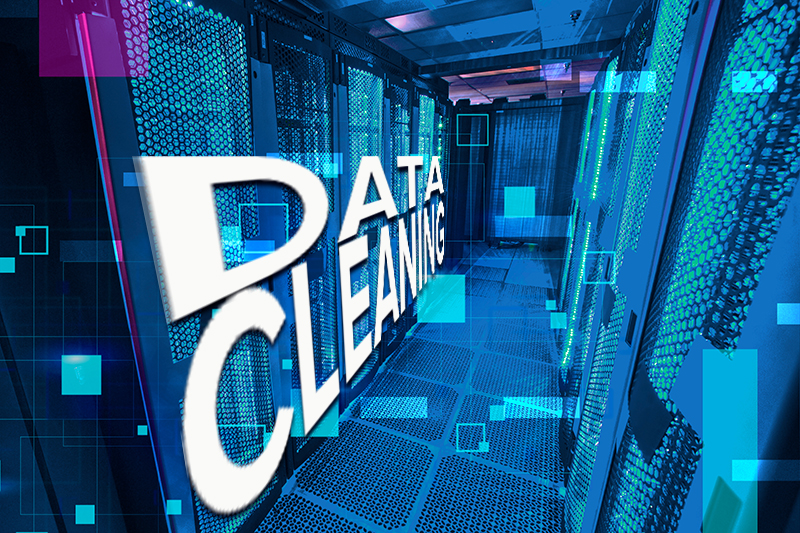People analytics can offer a number of advantages, like enhancing the employee experience and advancing diversity, equity, and inclusion initiatives. As a result, they are an essential component of HR departments’ operations. To prevent erroneous inferences from being drawn as a result of inaccurate data, HR directors must make sure the data is accurate. To withstand inspection from other members of the business and give HR directors trust that their data correctly reflects the organization and workforce, people analytics data must be clean. HR departments must therefore rely on data cleansing companies.
Analytics that can assist managers and executives in making better management and business decisions about their personnel are referred to as people analytics, often known as HR analytics. It frequently integrates with an HRMS and helped HR move from being a transactional and reactive administrative arm to one that is strategic and proactive. Unclean data can result in inaccurate perceptions and assumptions about data-driven insights, poorly informed actions based on those insights, and a general lack of faith in the analytics process. But with data cleansing process, you can fix incorrect, incomplete, duplicate and erroneous data to gain valuable insights, increase overall productivity and also helps in highest quality information in your decision-making.
Reasons Why Accurate People Analytics Data Is Important
- Poor data results in erroneous decisions
For data accuracy and analytics outputs, it’s important to bear in mind the principle of garbage in, garbage out. Data that is inaccurate will produce inaccurate results and lead you to make wrong conclusions. Checking for consistent data values is one technique to confirm that the data is accurate. Additionally, HR executives should ensure that each set of data is accurate and properly prepared. HR executives should collaborate with others to ensure that all data is uniformly organized and consistent with other data sets so that users can make comparisons with ease. All of this produces data analysis that is more precise.
- Unclean data can lead to software issues
Invalid data may be difficult for users to save in analytics systems, and the software may not accept a data set with mistakes. Importing erroneous data could result in user software problems and delays in delivering part or all analytics.
- Contaminated data can undermine trust
To withstand inspection from other members of the business and give HR directors trust that their data correctly reflects the organization and workforce, people analytics data must be clean. Inaccurate data may make stakeholders less willing to support future HR analytics-based decisions.
- It is impossible to interchange or move dirty data
In order for users to process and load data into other systems, it must be clean so that it is interoperable and portable.
| Learn more: Data Cleansing Services: A Must- have for Your Organization |
Importance of Cleansing HR Analytics Data
HR data is frequently corrupted. Any data record that has errors is said to be dirty data. This may occur due to a variety of causes. The easiest one is lacking data. Separate labels for the same job function, multiple records for the same person in the same system, records that don’t match in different systems, and other situations like these are instances of bad data.
The process of organizing and cleaning this data can take some time. It can take weeks or even months to compile data from all of these diverse data sources and make it compliant. This is especially true for businesses that operate internationally. These frequently record the same data using several systems in various nations. You can choose as a business to purge all of your data at once. Some businesses choose to use this tactic. However, it can take a very long time to do this. Therefore, it is far wiser to clean only the data you require to carry out a certain analysis.
This strategy will reduce a great deal of needless labor and accelerate the production of results. You can decide which additional data has to be cleaned in order to run your next analysis based on the findings of the first study. A smooth analysis can be done thanks to data cleaning. Additionally, since clean data can be supplied back into the HR systems, it aids in regular HR reporting. This will greatly benefit future data analytics and data aggregation efforts and help to improve the quality of the data. Therefore data cleansing is an essential stage in the HR analytics process.
A Quick Data Cleansing Checklist
Outdated data could lead to results that are irrelevant and could taint your findings. Additionally, you should confirm that you have all the necessary information because records frequently go missing. This may or may not result in issues, depending on how you interpret your data. While certain analytical techniques can handle missing data, some algorithms struggle with it. Data gaps will reduce the size of your population. Furthermore, there is a good likelihood that the individuals whose data is missing have commonalities with one another. For instance, you wouldn’t have information about every employee in that department if one department continued to use an obsolete performance management system that omits specific questions. This may severely distort your findings in favour of the other departments and jeopardize their capacity to be generalized.
- Verify the data’s accuracy.
- Look for unique identifiers that recur. Some individuals hold many positions. Systems frequently generate unique records for every role. As a result, these individuals wind up with numerous records in a single database. These documents might be streamlined, depending on the circumstance.
- Ensure that all the data is consistent, compare the data labels across various fields and merged datasets.
- Tally up the missing values. Your results might be skewed if missing values are overrepresented in some areas of the organization. This was demonstrated in the prior instance. Additionally, an analysis that has an excessive number of missing values (i.e., insufficient data) carries the risk of being incorrect. Additionally, this affects how generalizable your results are.
- Look for anomalies in the numbers. Determine the descriptive statistics and quantile values. You can use these to compute possible outliers. The lowest and highest values are a nice place to start.
- Identify genuine data output and eliminate any values for erroneous data. This applies to all data. Characteristics are distinctly specified. For instance, M or F define gender. The correct data values are those. Any further values are regarded as invalid. This data is simply flaggable for inspection.
People analytics data are a key component of the transformation in the function of human resources. HR personnel are now using analytics to find answers to important issues regarding workforce planning, skills gaps, and employee retention in order to ultimately offer value to their organizations in the light of increased demand for high-performing, specialized personnel. Therefore, it is important for businesses to reach out to a data cleansing service to keep the data clean.




